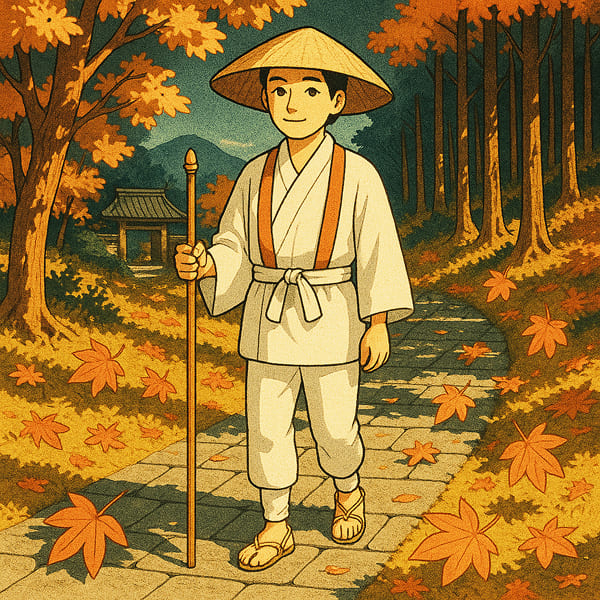Shikoku 88 Temple Pilgrimage: A Spiritual Journey Through Japan’s Sacred Buddhist Trail

Contents
A quiet path through misty forests. The rhythmic sound of footsteps. A thousand-year-old trail whispering stories of the past.
This is the Shikoku 88 Temple Pilgrimage—a journey that awakens the spirit as much as the senses.
Stretching over 1,200 kilometers and weaving through the four prefectures of Shikoku Island, this sacred pilgrimage connects 88 temples associated with the revered monk Kukai (Kobo Daishi), founder of Japan’s Shingon Buddhism.
But this is no ordinary trek. Whether walked in full or visited in part, the pilgrimage invites travelers to experience deep reflection, Buddhist wisdom, and the quiet beauty of traditional Japanese culture—all while tracing a path walked for over a thousand years.
What drives people to take on such a journey?
What do they discover—not just in temples, but within themselves?
In this article, we’ll explore the origins, rituals, and spiritual meaning of Ohenro—one of the most powerful and enduring pilgrimages in Japan.
History and Origins: Walking in Kukai’s Footsteps
The pilgrimage’s origins date back to the 9th century, when Kukai himself is said to have traveled through Shikoku performing ascetic practices and founding temples. Over time, these sites were linked to form a sacred pilgrimage route, becoming a refuge for those seeking spiritual healing, peace of mind, and enlightenment.
By the Edo period, the pilgrimage gained popularity across all social classes, and today, it remains a living spiritual tradition and a vital part of Japanese religious heritage.
Pilgrimage Practices: Tradition, Symbols, and Sacred Acts
Though modern transportation options exist, many still choose to walk the entire route—a commitment that typically takes 30 to 60 days. Walking the full path is considered an act of devotion that encourages humility, mindfulness, and spiritual renewal.
Key Traditions Along the Route:
- Pilgrim Clothing (Henro Garb): Pilgrims typically wear white robes, conical hats, and carry the kongō-zue (walking staff) believed to represent Kukai’s spirit journeying beside them.
- Osettai (Local Offerings): Residents along the route offer gifts such as snacks, drinks, or lodging, embodying the Japanese value of omotenashi (hospitality) and mutual respect.
- Temple Rituals: At each of the 88 temples, pilgrims recite sutras, ring bells, offer coins, and collect nōkyō stamps—a meditative and symbolic act of spiritual commitment.
Meaning and Mindfulness: The Inner Journey
The Shikoku Pilgrimage is more than a route—it's a transformational experience. Walking day after day through serene countryside and ancient temple grounds allows time for inner stillness, contemplation, and the release of worldly concerns.
Rooted in the Buddhist teachings of impermanence and compassion, this pilgrimage encourages seekers to explore the spiritual heart of Japan. Many describe the experience as life-changing—providing not only a break from modern distractions but also a deep sense of healing and purpose.
Shikoku Pilgrimage Today: A Global Spiritual Path
In recent years, the Shikoku 88 Temple Pilgrimage has attracted increasing interest from international visitors. Whether driven by religious devotion, personal healing, or cultural curiosity, travelers from around the world come to experience this sacred Buddhist trail in Japan.
Local governments and communities now offer a range of pilgrimage guides, accommodations, and support services to help both Japanese and foreign pilgrims navigate the journey. The pilgrimage also plays an important role in preserving rural traditions, supporting small-town tourism, and promoting cross-cultural exchange.
Conclusion: Why the Shikoku 88 Temple Pilgrimage Endures
The Shikoku Pilgrimage remains a profound symbol of spiritual endurance and cultural continuity in Japan. It offers a unique way to connect with the country’s religious legacy, natural beauty, and timeless values.
Whether you walk all 88 temples or visit just a few, Ohenro presents a rare opportunity to step out of the noise of daily life and into a world of quiet reflection, spiritual growth, and authentic Japanese tradition. For those seeking a deeper understanding of self and the sacred, the path of Kukai still calls.